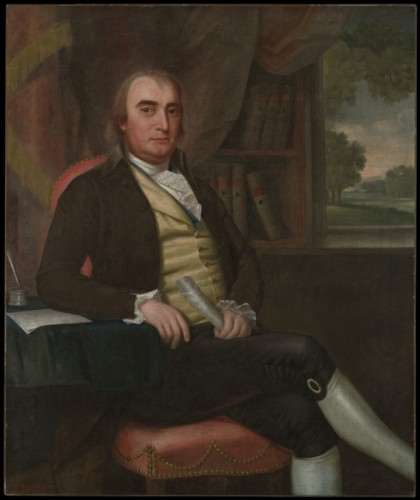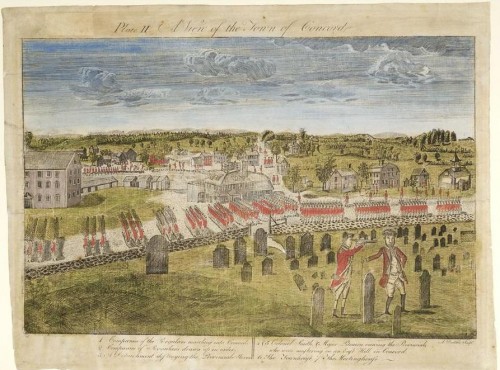Among the number of 18th-century artists who resided in Bolton was the early American painter, Ralph Earl. Born in Massachusetts in 1751, Earl spent much of his early career as a self-taught portrait painter in New Haven. In 1775, he and engraver Amos Doolittle took a trip to see the scenes of the recent battles at Lexington and Concord. Earl drew four pictures of the battles and Doolittle translated them into engravings for printing; these are the earliest Revolutionary War battle scenes distributed in America. He also painted portraits of prominent figures, including Roger Sherman, a New Haven lawyer and politician who later served on the committee that drafted the Declaration of Independence, and Timothy Dwight, a minister and educator who would become president of Yale College.
The Changing Fortunes of a Loyalist
Although Earl’s father was a colonel in the Continental army, Earl was a loyalist. Fearing for his safety, he moved to England in 1778. Taking up his studies in London, he fell under the tutelage of Benjamin West, a fellow expatriate who had relocated to England more than a decade earlier. Earl proved quite successful at attracting new patrons and received commissions from a number of England’s elite, including a commission to paint a portrait of King George III.

John Davenport (1752-1830), 1794, oil on canvas – By Ralph Earl, Yale University Art Gallery. Used through Public Domain.
Earl returned to America in 1786 and attempted to establish himself in New York, but he landed in debtor’s prison after finding himself unable to repay a number of outstanding loans. Alexander Hamilton’s wife, Elizabeth, was among those who commissioned work from the artist during his prison stay. Others, who advocated abolishing laws that punished indebtedness by taking away the debtor’s ability to earn, did likewise. After serving one year of his sentence, he obtained his release and traveled throughout New England painting portraits for prominent leaders and their families. In addition to these later portraits, Earl managed to produce a number of important landscapes detailing the 18th-century Connecticut countryside.
Unfortunately for Earl, as the 1700s came to a close, he began losing his ongoing battle with alcoholism. By the end of his career, the quality of his art began to suffer and his addiction helped alienate numerous wealthy patrons. Earl, poverty stricken, died in Bolton in 1801. A local reverend listed his cause of death as “intemperance.”
Ralph Earl’s legacy is far greater than the stone placed in Bolton Center Cemetery in his memory. Earl’s paintings document a vital era in American history. Art museums across the country, including the Wadsworth Atheneum Museum of Art in Hartford and the Yale University Art Gallery in New Haven, house his paintings. In addition, Southern Connecticut State University, also in New Haven, named its fine arts building Ralph Earl Hall in his honor.









